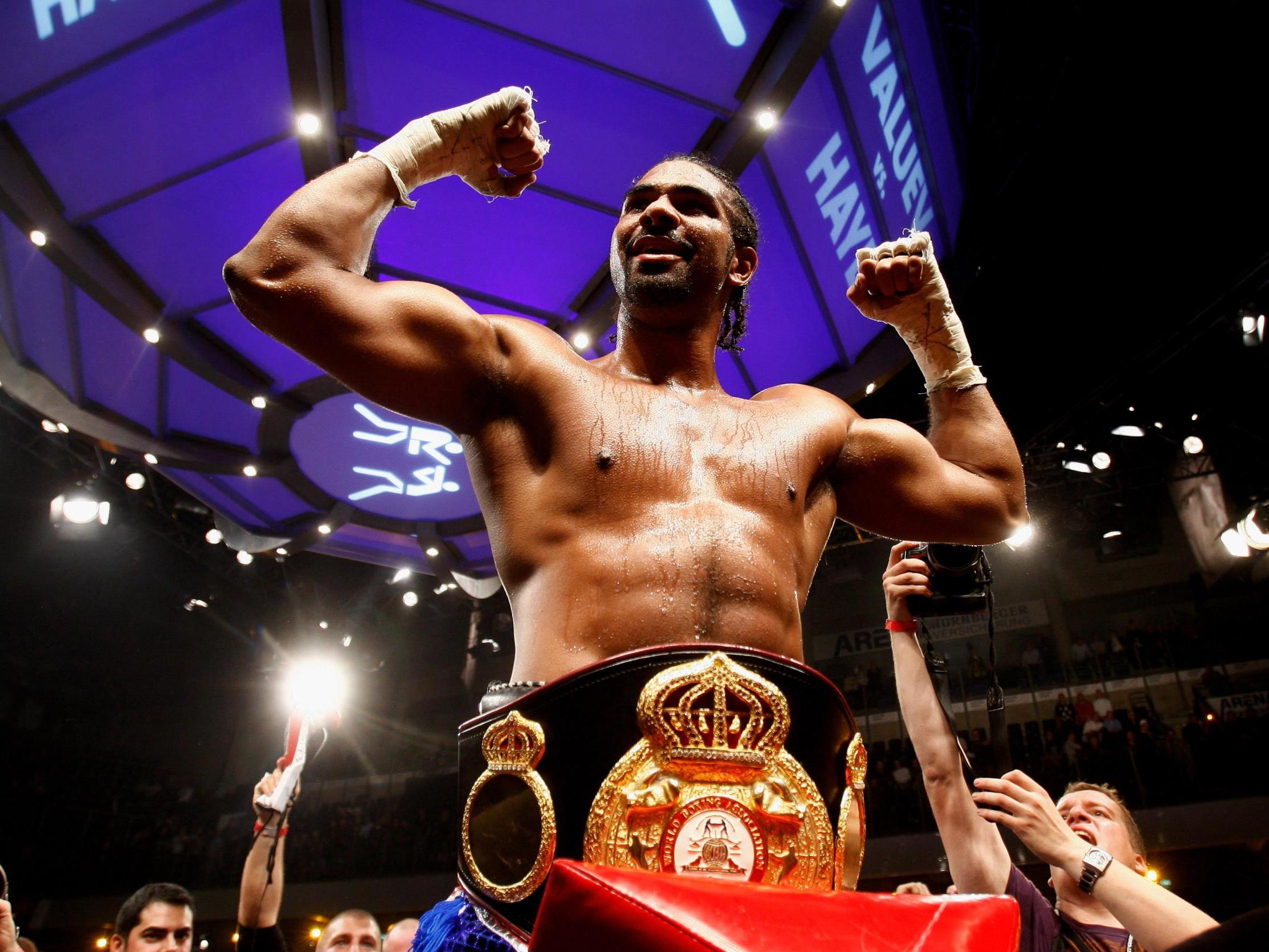David Haye: ‘Injury gets very lonely, it’s tough when you can see the rest of the world moving on’
Exclusive interview: After falling from the very pinnacle of the sport, Haye reveals the depths he sunk to climb back on to boxing's main stage once more

For a couple of years, David Haye was on top of the boxing world. He was young, good looking, earning £2m paychecks from his biggest fights and living his lifelong dream as a heavyweight champion. He had toppled the 7ft Russian ‘Frankenstein’, Nikolai Valuev, to claim the WBA belt, and beaten challengers John Ruiz and Audley Harrison to retain it, so when he stepped into a bear pit in July 2011 to take on the great Wladimir Klitschko in an attempt to unify the division, Haye did so brimming with confidence at the peak of his powers.
But from that sweaty night in Hamburg, things began to unravel. Haye lost the fight to a unanimous decision and broke his toe in the process. He pulled out of a subsequent bout with Manuel Charr after suffering a hand injury, postponed a contest against Tyson Fury after sustaining a deep cut to the head, and eventually cancelled the Fury meeting altogether to have shoulder surgery. Fury accused Haye of running scared, but the reality was that the former champion was in danger of never stepping into a ring again.
“My doctor told me it was a career-threatening injury,” Haye tells The Independent. “The press took that as ‘David has retired’. It felt like the media were trying to retire me publicly.” He had gone from the very pinnacle of the sport to near-irrelevance in two years, and it hurt almost as more than his shattered shoulder. “I had some tough, dark moments. That’s life, everybody has dark moments. You can see the athletes who achieve great heights but you don’t see the blood, sweat and tears that goes on behind the scenes when they weren’t able to compete, how they were living, what they were doing, what drive they had. Does your ambition start to dwindle? Do you somehow have to conjure up a mindset that you’ve never had before? I had to ask myself a lot of questions.”
He set his sights on not only recovering from injury but returning to the heart of the heavyweight scene, but all the while the sport continued without him. “It gets very lonely, it’s tough when you can see the rest of the world moving on. Big fights keep happening and you’re not in them. You know you have the ability but there’s an injury that’s stopping you from being able to perform.”
Slowly Haye built back his fitness. He stuck meticulously to a holistic rehab regime which worked every facet in tandem with his shoulder, as well as his back after he underwent spinal surgery. “I couldn’t use one of my arms for eight months. I had to use every other part of my body – I didn’t want to let the remainder of my body diminish. So finally when my arm did get better, I didn’t have to build everything back up. It was all about trying to live the best way you can. You need to just have in mind where you want to get to. You’ve got to focus on that, so you know everything you do daily is getting you that bit closer.”
At the age of 35, more than three years after his last fight, Haye returned, drawing a worldwide audience to see him knockout the world’s No10 ranked heavyweight, Mark de Mori. Haye beat Swiss fighter Arnold Gjergjaj too, before setting up a showdown with fellow Briton Tony Bellew, where an Achilles injury left him tottering to an epic points defeat, one described in some quarters as his greatest performance despite the loss. “I tried as hard as I could,” Haye reflects. “You can’t rewind the clock on your body. I was able to get back and perform. I had four more fights, two victorious. Even walking to the ring to fight Tony Bellew, I still thought ‘I’m going to be heavyweight champion of the world’. I think that sort of mindset is what sets people apart.”
In association with Voltarol. For more information about our products or to report an aderse event with one of our products please contact 0800 783 8881.
